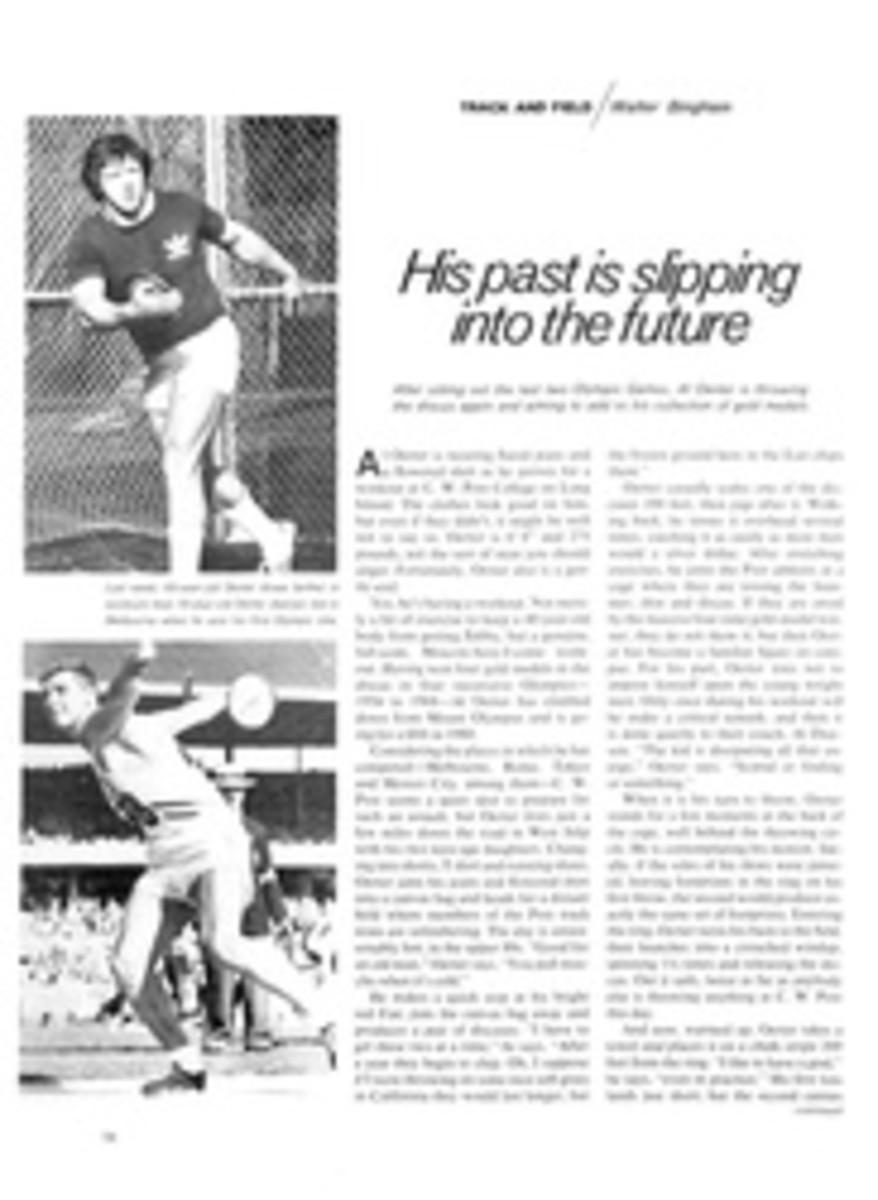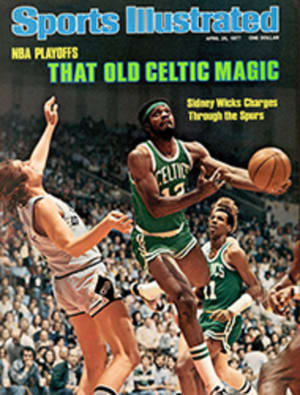
THE SETTING WAS MINNESOTA, BUT THE RIVALRY WAS THE GIANTS VS. DODGERS
Baseball nostalgia knows no geographic limits. You didn't have to walk along Bedford Avenue or Coogan's Bluff to have memories, a point I've tried to make—alas, in vain—in the 10 years since I came to New York. How often have I been drowned out in a crowd of "trivialists" recalling their whereabouts on Oct. 3, 1951 when Bobby Thomson hit the home run. Well, I remember my whereabouts, too. I was 11 and heartbroken in St. Paul, Minn. I even cried a little that afternoon under the tired old apple tree in my backyard.
You see, I loved the Dodgers but only by proxy. Brooklyn owned the St. Paul Saints of the American Association in the late '40s and early '50s, so we St. Paulites were inextricably, one might even say umbilically, tied to the parent team. Across the Mississippi, the fans of the Minneapolis Millers were similarly attached to the New York Giants. It was a perfect minor league version of the Dodger-Giant rivalry. Minneapolis and its home grounds, Nicollet Park, though only a streetcar ride away, were as foreign and hostile to me as upper Manhattan and the Polo Grounds must have been to a kid from Brooklyn. Even now the images are vivid, if distorted. Mention the Saints, and I see crisp white uniforms and sunlight falling on the Lexington Park outfield grass. Mention the Millers and they appear in my mind, gray and menacing. The Millers always looked fat. I see them spitting Bull Durham.
At mid-century, just before the minor leagues began to disappear, the eight-team American Association was as stable as the National and American leagues. The Saints were stocked by the richest of all farm systems and supported by a populace not yet diverted by tennis camps, second homes and an encroaching football season. Down on the Triple A farm we saw the stars in their ascent—Duke Snider, Roy Campanella and Clem Labine at St. Paul, Willie Mays at Minneapolis, Mickey Mantle and Jackie Jensen at Kansas City, Harvey Haddix at Columbus, Herb Score at Indianapolis, Jim Piersall at Louisville.
We also watched the stars in their eclipse. Johnny Mize was farmed out to Kansas City late in his career, and in 1955 Monte Irvin, at 36, helped the Millers win a pennant. But it was the thirtyish veterans, the players just a shade below big-league quality, who formed the backbone of the American Association, gave the league its year-to-year continuity. Often they lasted four, five or six seasons, and we grew to know their quirks, their superstitions, their voices. One summer in the late '40s, a St. Paul pitcher, Mel Himes, rented a house a block from mine. The bolder neighborhood kids met Himes and were given splintered bats they patched up with screws and tape. Too shy to approach Himes, I walked past the white-frame house with hushed respect, as though some deity (not a mere Saint) lived within.
Had Eric (the Red) Tipton moved into my neighborhood, I would have been too star-struck to sleep at night. Tipton, No. 7, leftfielder and cleanup hitter, played six years with the Saints and seldom failed to drive in 100 runs. A 1938 All-America football player at Duke (and now the baseball coach at West Point), Tipton was doubtless the most popular figure in town. My oracles of the time—Marty O'Neill on WMIN radio and sportswriters Joe Hennessy and Mark Tierney—called him the People's Choice and Old Reliable.
There were others who came back to St. Paul each spring as surely as the lilacs: Earl Naylor, a smooth centerfielder; Ferrell Anderson, a husky catcher whose biceps bulged from short-sleeved flannels; Phil Haugstad, a 20-game winner whose hitting was so anemic that Johnny Hutchings, the fat Indianapolis reliever, once pitched his glove to him.
In 1949 the Saints won the pennant—their first since 1938—and the hated Millers finished far back in fourth. I saw 10 games that summer, and in the cloudless blue skies of my memory, the Saints won them all. Lexington Park, with its odd contours and dimensions, became as familiar to me as my own attic room. The left-field wall, 315 feet from the plate, was analogous to Fenway Park's Green Monster. Directly behind the fence was the Coliseum roller rink, topped by a sloping gray roof. It took a long Tiptonesque blow to clear the Coliseum, most homers landing on the roof and dropping back onto the field.
Lexington's 10,109 seats were grouped along the foul lines in a single-tiered grandstand—a bandbox by big-league standards, but a penthouse compared to Nicollet in Minneapolis. The latter was a rotting tenement of a park, but a dream for left-handed hitters. Its right-field porch was only 279 feet from home, so the Millers packed their lineup with such left-handed villains as Chuck Workman, Babe Barna and Jack Harshman. No matter what the weather or standings, the Saints and Millers sold out almost all the 22 inter-city games every season. Each summer there were three peaks in the rivalry: home-and-home doubleheaders on Memorial Day, July 4th and Labor Day. There would be a morning game at one park, an afternoon game at the other. Packed streetcars carried fans back and forth between the cities.
Fights erupted routinely at Lexington and Nicollet—player vs. player, fan vs. fan, even player vs. fan. Evidently nothing in my era came close to matching the Saints-Millers brawl of July 4, 1929. A Minneapolis reporter called it "the most vicious affair ever witnessed at Nicollet" and noted that it "required fully a dozen policemen to quell the disturbance." I remember when Sal Yvars, a Minneapolis catcher, climbed into the stands to take on a Saints fan and was immediately declared Public Enemy No. 1 in St. Paul. In the 1950s Gene Mauch of the Millers throttled a St. Paulite who had been needling him through a bullhorn.
Young fans grow up, teams and leagues consolidate, old ballparks are torn down, and one day the summer sweetness is gone. For me it disappeared when Lexington Park was leveled after the 1956 season and a sterile new stadium (not a park, of course) was built on a drab industrial plot near the State Fairgrounds. Nicollet Park had come down in 1955, and the Millers had moved to a suburb called Bloomington, which in 1961 became the home of the Minnesota Twins, sealing the fate of minor league baseball in St. Paul and Minneapolis. It was a measure of the changing times that a supermarket was built on the site of Lexington Park and a drive-in bank at Nicollet's old corner.

